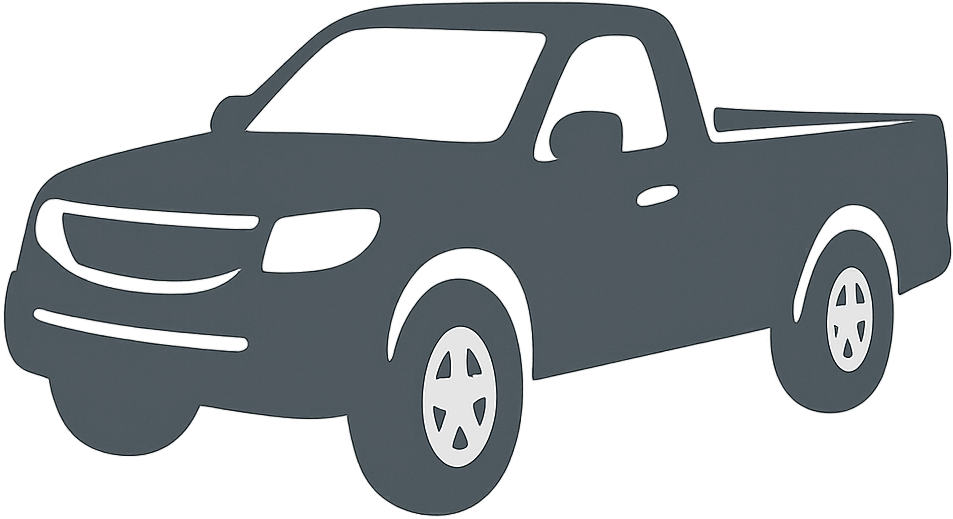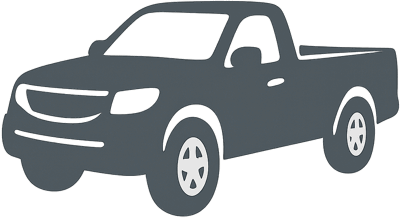 1998 Mazda B-Series VI Dimensions, Size & Specs
1998 Mazda B-Series VI Dimensions, Size & Specs
Measurements of the 1998 Mazda B-Series VI, engineered for optimal performance and comfort
| Dimensions | |
|---|---|
| Length: | 4763-5154 mm187.5-202.9 in15.6-16.9 ft |
| Width: | 1695-1763 mm66.7-69.4 in5.6-5.8 ft |
| Height: | 1646-1740 mm64.8-68.5 in5.4-5.7 ft |
| Weight Specifications | |
| Curb Weight: | 1205 kg2657 lbs |
| Maximal permitted Weight: | 1725 kg3803 lbs |
| Tire Specifications | |
| Rims Sizes: |
|
| Tire Sizes: |
|
The Mazda B-Series VI, produced from 1997 to 2006 with the 1998 model year as part of its range, is a versatile midsize pickup truck that balances utility with manageable dimensions. This generation features a length varying from 4,763 mm (187.4 inches) up to 5,154 mm (202.9 inches), enabling configurations that suit both work and personal use. The width ranges between 1,695 mm (66.7 inches) and 1,763 mm (69.4 inches), providing a stable road presence without compromising maneuverability in urban settings or tight work environments. The height spans from 1,646 mm (64.8 inches) to 1,740 mm (68.5 inches), reflecting variations in suspension and cab design options available across trims. With a curb weight of approximately 1,205 kg (2,656 lbs), the B-Series VI remains relatively lightweight for a pickup, contributing to efficient handling and fuel consumption. The maximum allowable weight reaches 1,725 kg (3,802 lbs), allowing ample payload capacity for typical midsize truck duties. This generation comes with rim sizes of 15 and 16 inches, paired with tire options including 225/70 R15 and 205/80 R16, enhancing both ride comfort and off-road capability. Overall, the Mazda B-Series VI stands out as a practical choice for anyone needing a durable pickup truck that combines decent size, moderate weight, and versatile tire and rim configurations to meet various driving demands.
Discover the standout features that make the 1998 Mazda B-Series VI a leader in its class
Have a question? Please check our knowledgebase first.
The Mazda B-Series VI, produced between 1997 and 2006, has a length that ranges between 4763 mm and 5154 mm (approximately 187.5 to 203 inches). This variation depends on the specific trim level and cab configuration chosen, such as regular cab or extended cab versions. The longer length typically corresponds to extended cab models, which provide more space behind the front seats for passengers or cargo. The length plays a significant role in the vehicle's cargo bed size and maneuverability, with shorter versions easier to park in tight spots while the longer versions allow increased practicality for carrying larger loads.
The width of the Mazda B-Series VI varies between 1695 mm and 1763 mm (approximately 66.7 to 69.4 inches). This width range is fairly typical for midsize pickup trucks, striking a balance between interior cabin space and external road presence. The wider versions might offer slightly better stability and cabin comfort but can be more challenging to maneuver in narrow urban streets or tight parking spaces. Nevertheless, its overall width keeps it competitive in its class, allowing for comfortable seating while maintaining road agility.
The height of the Mazda B-Series VI ranges from 1646 mm to 1740 mm (around 64.8 to 68.5 inches). This height can vary based on suspension, tires, and specific trim options such as 4x4 configurations. This range allows the B-Series to maintain a relatively low profile for a pickup truck, which is beneficial when driving under low-clearance structures such as parking garages or drive-thrus. However, this height should still be measured against your local garage clearance as some custom or older garages might require caution. Typically, most standard garages with a clearance of about 2000 mm (78 inches) will comfortably fit this truck.
The Mazda B-Series VI has a curb weight of approximately 1205 kg (about 2,656 lbs). This relatively light weight for a pickup truck contributes positively to fuel economy, maneuverability, and overall driving dynamics. A lighter vehicle generally consumes less fuel and provides more responsive handling, especially in urban driving situations. The balance of weight and size allows the B-Series VI to be versatile enough for light cargo hauling, daily commuting, and mild off-road conditions without the heavy fuel consumption often associated with larger trucks.
The maximum weight (gross vehicle weight rating) of the Mazda B-Series VI is about 1725 kg (3803 lbs). This includes the curb weight plus the payload — the combined weight of passengers, cargo, and any additional equipment. The difference between maximum weight and curb weight (1725 kg - 1205 kg) gives an approximate payload capacity of 520 kg (around 1,146 lbs). This makes the B-Series VI practical for a variety of utility tasks such as transporting moderate loads, light construction materials, or recreational gear, typical for midsize pickups.
The Mazda B-Series VI is equipped with rim sizes of 15 or 16 inches, depending on the trim and variant, paired with tire sizes 225/70 R15 or 205/80 R16. Larger rims and tires generally improve off-road traction and offer better road grip, while slightly larger sidewalls on tires like 205/80 R16 help absorb shocks from uneven surfaces, enhancing ride comfort. The 15-inch rims with 225/70 tires provide a good balance for on-road driving and light off-roading. Choosing between sizes might also impact the truck's ground clearance and overall handling based on the tire profile.
Yes, the Mazda B-Series VI generally fits into a standard residential garage or carport. With length ranging from 4763 mm to 5154 mm (187.5 to 203 inches), width between 1695 mm and 1763 mm (66.7 to 69.4 inches), and height from 1646 mm to 1740 mm (64.8 to 68.5 inches), the truck is within the size parameters of typical garages. Most residential garages have an internal width of about 2,740 mm (108 inches), a length of 6,000 mm (236 inches), and height clearances around 2,000 mm (78 inches) or more, allowing adequate room for the B-Series while also providing space to open doors comfortably and maneuver.
Compared to its predecessor, the Mazda B-Series VI shows noticeable improvements in size, comfort, and utility. Earlier generations were typically shorter and narrower, with less focus on cabin space and modern amenities. The VI generation introduced longer body options (up to 5154 mm) and wider dimensions, enhancing passenger comfort and cargo capacity. Additionally, weight management allowed keeping the curb weight relatively low despite size increases. Performance-wise, the newer generation benefited from updated engine options and suspension tuning for smoother handling and better fuel efficiency, making it a more versatile and practical pickup than its predecessor.
When compared to similar midsize pickups from the late 1990s and early 2000s, such as the Toyota Tacoma, Nissan Frontier, and Ford Ranger, the Mazda B-Series VI generally falls within the same size class. The B-Series has a length ranging from approximately 4.76 to 5.15 meters, width between 1.7 to 1.76 meters, and height around 1.65 to 1.74 meters, which are competitive figures. Payload capacity and curb weight also align well with these models, though some competitors may offer larger engine options or additional features. Mazda’s offering emphasizes lightweight construction and balanced dimensions, giving the B-Series VI an edge in maneuverability while remaining sufficiently spacious and practical.
The Mazda B-Series VI was widely appreciated for its versatility, combining the ruggedness expected of a pickup truck with refined driving characteristics. Produced between 1997 and 2006, it was favored for light-duty transportation, recreational use, and small business needs. The truck offered various cab configurations (regular and extended), drivetrain choices (including 4x4 options), and engine variations to suit different needs. Its moderate size, fuel-efficient engines, and manageable dimensions made it popular both in urban environments and for light off-road adventures. It was also known for durability and ease of maintenance, contributing to its lasting appeal.
Discover similar sized cars.

| Production: | 2006-present |
|---|---|
| Model Year: | 2001 |
| Length: | 4763-5154 mm187.5-202.9 in |
| Width: | 1763-1786 mm69.4-70.3 in |
| Height: | 1648-1715 mm64.9-67.5 in |

| Production: | 2008-2012 |
|---|---|
| Model Year: | 2009 |
| Length: | 5020 mm197.6 in |
| Width: | 1800 mm70.9 in |
| Height: | 1730 mm68.1 in |
